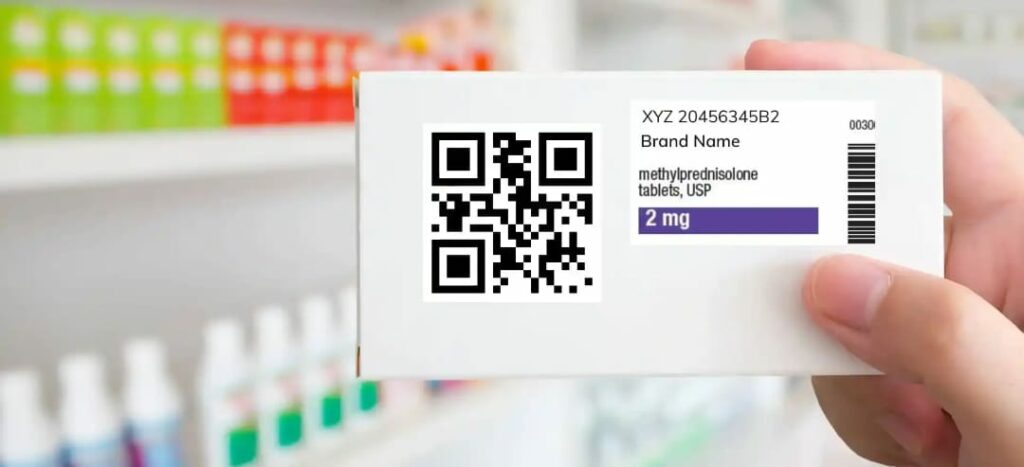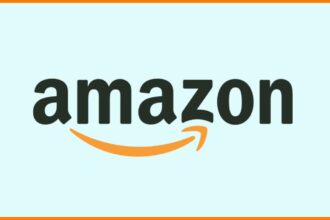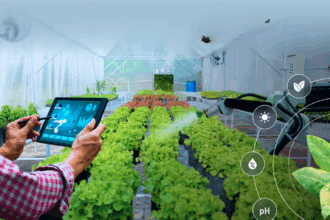The Indian pharmaceutical industry is the world’s third-largest by volume and 14th largest by value. However, it faces significant challenges due to counterfeit drugs, which reportedly make up 20% of the market.
To address this, the Indian government has mandated the use of QR codes on drug packaging to help ensure the authenticity of medicines. This article explores how QR codes will help prevent the sale of spurious drugs and the broader implications of this initiative.
Advantages of QR Codes for Drug Packaging
QR codes, or Quick Response codes, are a type of matrix barcode that can store a large amount of information. When applied to drug packaging, these codes serve as a tool for tracking and tracing the product through the supply chain.
This initiative was approved by the Drugs Technical Advisory Board (DTAB) in June 2019 and is part of a broader effort by the Ministry of Health to curb the circulation of counterfeit medicines.
Operational Details of the QR Code System
Under the new “track and trace” mechanism, QR codes will be printed on the primary packaging labels of drugs. This includes the first-level packaging such as bottles, jars, tubes, or strips. When consumers scan the QR code using a smartphone or a dedicated scanner, they will be able to access detailed information about the drug, including:
- Unique product identification code
- Proper and generic name of the drug
- Brand name
- Manufacturer’s name and address
- Batch number
- Date of manufacturing and expiry
- Manufacturing license number
Streamlining Checkouts at Medicine Stores
One of the most immediate benefits of QR code implementation is the simplification of the checkout process at pharmacies. Here’s how:
- Faster Transactions: Pharmacists can quickly scan the QR code on each drug package, automatically retrieving all necessary information such as the drug name, manufacturer, batch number, and expiry date. This speeds up the transaction process, reducing wait times for customers.
- Error Reduction: Manual entry of drug information can lead to errors, which may have serious consequences in the pharmaceutical context. QR codes eliminate this risk by ensuring that all data is accurately captured and processed.
- Enhanced Inventory Management: QR codes enable real-time inventory updates. As soon as a drug is scanned and sold, the inventory records are updated, helping pharmacies maintain accurate stock levels and reorder drugs before they run out.
- Customer Assurance: At the point of sale, customers can scan the QR code themselves using a smartphone to verify the drug’s authenticity through a government portal. This builds trust and ensures they are purchasing genuine products.
Improving Supply Chain Efficiency with Scan-Based Processing
Beyond the point of sale, QR codes offer extensive benefits throughout the pharmaceutical supply chain:
- Track and Trace Capability: Each QR code contains a unique identifier that allows for precise tracking of the drug from the manufacturer to the end consumer. This visibility helps in monitoring the journey of each drug package, ensuring accountability and reducing the chances of diversion or theft.
- Quality Control: By scanning QR codes, stakeholders at various stages of the supply chain can verify the integrity of the drugs. This includes checking for proper storage conditions and handling, which are critical for maintaining drug efficacy.
- Recall Management: In the event of a drug recall, QR codes make it easier to identify and remove the affected batches from the market quickly. This targeted approach minimises the impact on consumers and reduces the financial loss for manufacturers.
- Regulatory Compliance: QR codes simplify compliance with regulatory requirements by maintaining a digital record of the entire supply chain. This traceability ensures that all stakeholders adhere to the standards set by health authorities, thereby enhancing overall supply chain integrity.
- Data Integration: QR codes facilitate seamless data integration across different platforms used by manufacturers, distributors, and retailers. This harmonisation of data helps in better forecasting, demand planning, and optimising supply chain operations.
Global Adoption of QR Codes for Pharmaceutical Traceability
Globally, QR codes are being adopted to enhance pharmaceutical traceability and combat counterfeit drugs. Countries implementing QR codes for this purpose include the European Union, China, Indonesia, Japan, Turkey, Brazil, Russia, the United States, and Nigeria.
Conclusion
The introduction of QR codes on drug packaging marks a significant advancement in the fight against counterfeit pharmaceuticals. However, their benefits extend far beyond ensuring drug authenticity.
By streamlining checkouts at medicine stores and enhancing scan-based processing throughout the supply chain, QR codes promise to bring about a new era of efficiency, safety, and transparency in the pharmaceutical industry.
As these technologies continue to evolve, we can expect even greater innovations that will further strengthen the integrity of the global pharmaceutical supply chain.







